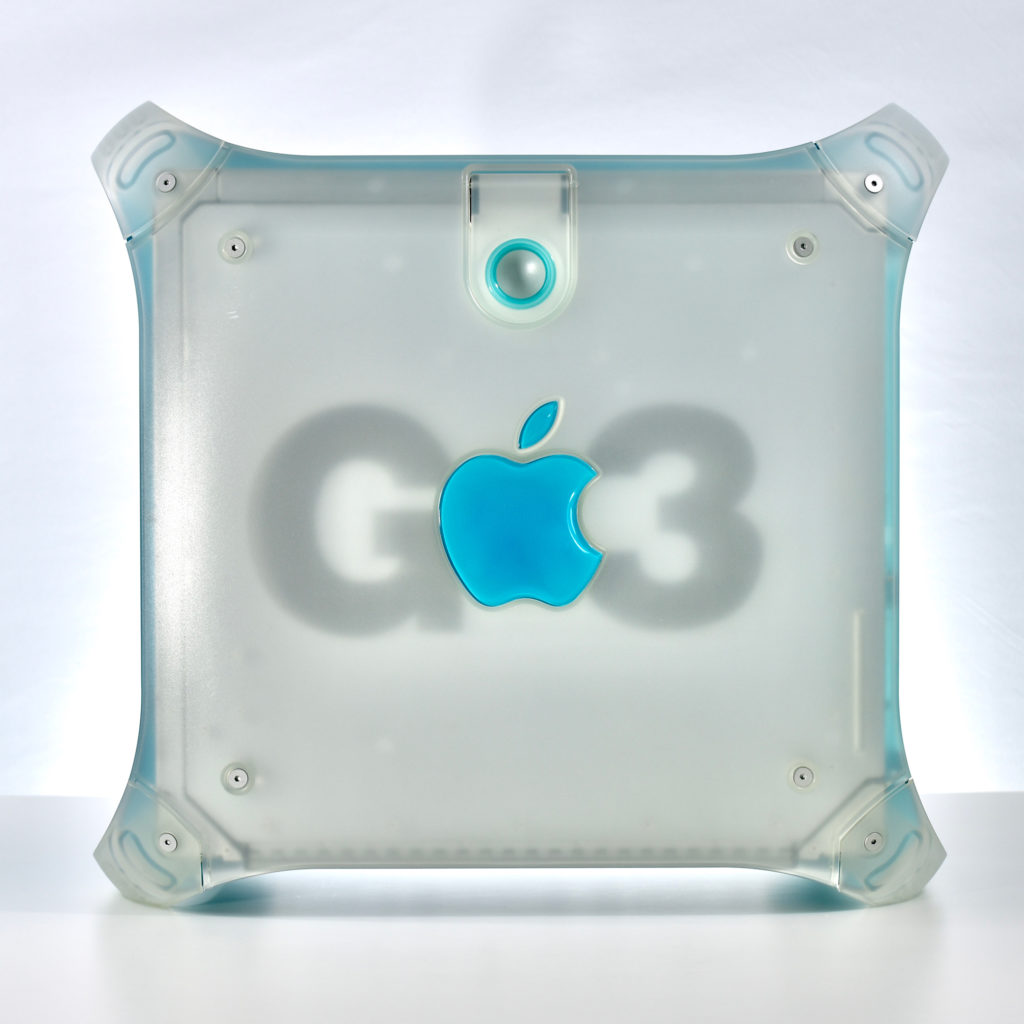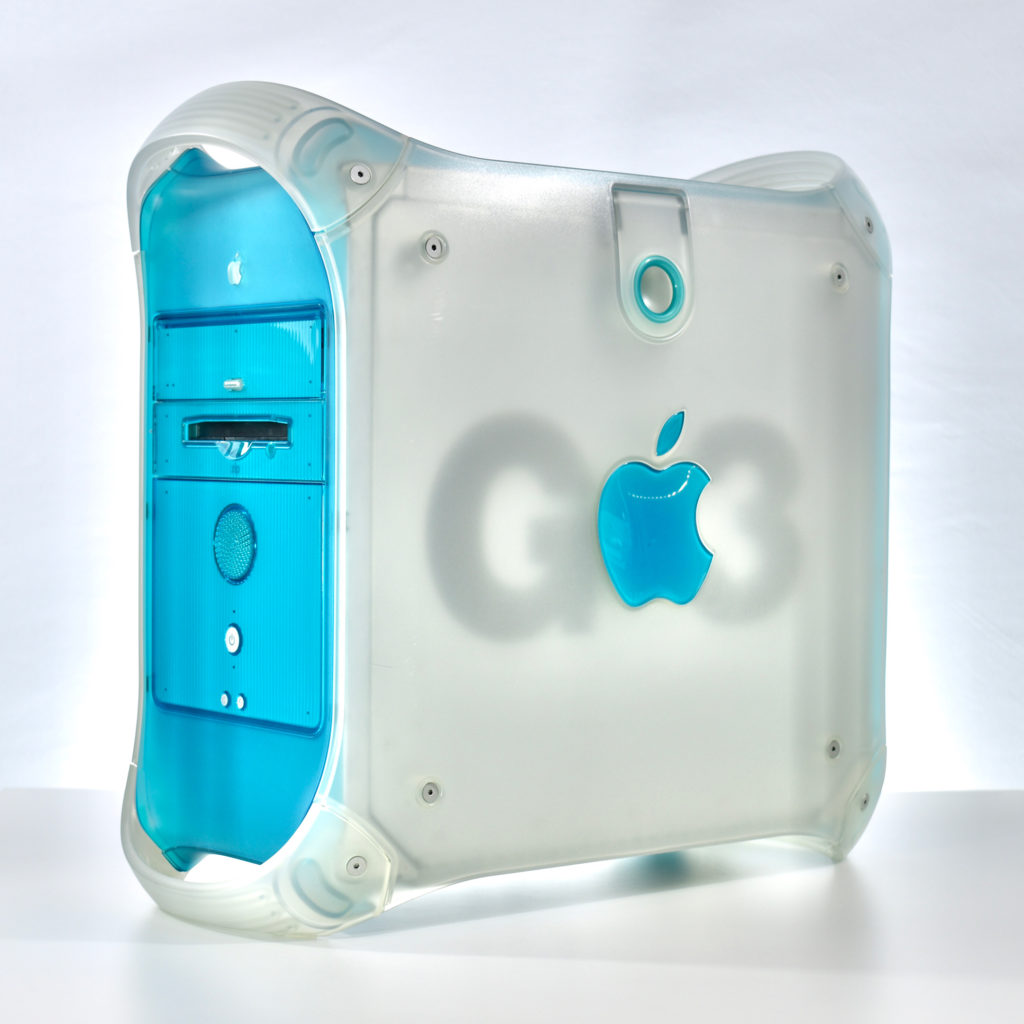The Power Macintosh G3 was the first new tower desktop to be released after the original iMac in 1998. The iMac at the time was originally released in “Bondi” blue—a translucent blue-green hue reminiscent of the waters off Bondi beach in Australia—that was replaced in 1999 with a brighter translucent set of colors including a shade of blue called “blueberry.” The Power Macintosh G3 was closer in color to the blueberry iMac, but it was not an exact match.
The Power Macintosh G3 was known as the “blue and white” tower. The tower used a translucent white outer case on both sides and featured both a glossy, translucent blue Apple logo and the characters G3 boldy printed under the frosted white translucent plastic to achieve a blurred, shadowy effect.
The front of the Power Macintosh G3 was translucent blue with an underlying pinstripe pattern. The top of the front included spaces for two optical drives. This example includes a CD-ROM and a Zip drive (from the company Iomega). Below the media drives was a speaker, the power button, and two additional smaller buttons—reset and “interrupt” buttons—both used to recover from system-level issues.
The back of the tower included ports, including two FireWire (400) ports, one ADB port, one ethernet port, two USB ports, and side-by-side 3.5 mm microphone (audio-in) and audio-out ports. A space for a modem port is included, but unused in this example. Four slots were also available. This model includes slot 1 with a standard VGA port, slot 2 with AV ports including a DB-15 (“Mac Video”) port, two S-video, and one yellow video-in RCA port. Slots 3 and 4 are unused.
The port choices represent an interesting mix of legacy and brand new technology. While the desktop was the first to include FireWire 400 ports, it also included the then-new USB standard, but curiously included one then-outdated ADB port. The slots below show a similar mix of old and new: VGA and the old-style “Mac Video” DB-15 port. Thus, while the iMac was only looking forward, this tower allowed old and new peripherals to be used.
The right side of the tower included a latch with a circular rubberized grip that allowed the entire side of the tower to be opened on a hinge, revealing and providing relatively easy access to all internal components. Plug-in slots (such as video and memory) were attached to the hinged side, while components such as drives and fans remained attached to the internal metal frame of the tower.
Internally, this Power Macintosh G3 uses a 300 MHz PowerPC 750 G3 processor, 64 MB of RAM, a 6 GB hard drive, a 32X CD-ROM drive, and an ATI Rage graphics card. The hard drive was a faster, server-grade Ultra ATA/33 model when iMac computers of the time included IDE/ATA hard drives.
A highly specious rumor of the time noted that the design of this tower included a Disney reference. When viewed sideways, a Mickey Mouse ears shape can be seen in the negative space between the “bite” in the Apple logo and the inside of the Helvetica Bold “3” in the “G3” logo on the sides of this tower. The conspiracy theory speculated that Disney was contemplating the purchase of Apple.
I used versions of this blue and white tower in two of my educational technology leadership positions. In both cases, I used this tower to create videos and other multimedia using early versions of iMovie and other multimedia creation software.
Source: Everymac
































